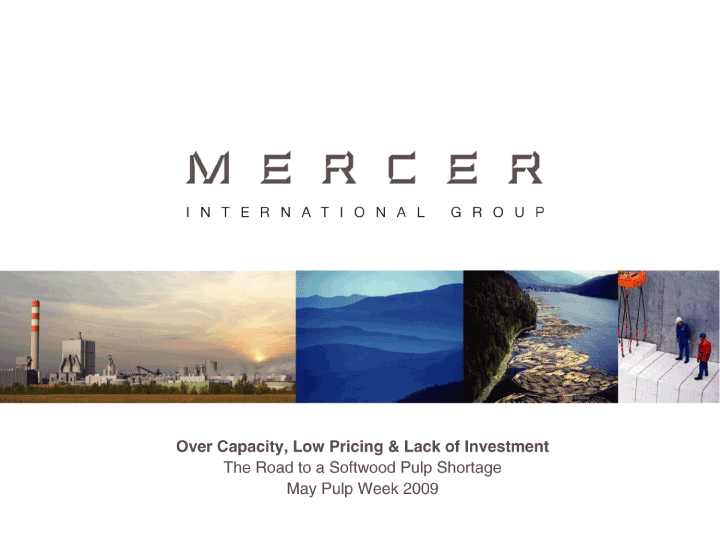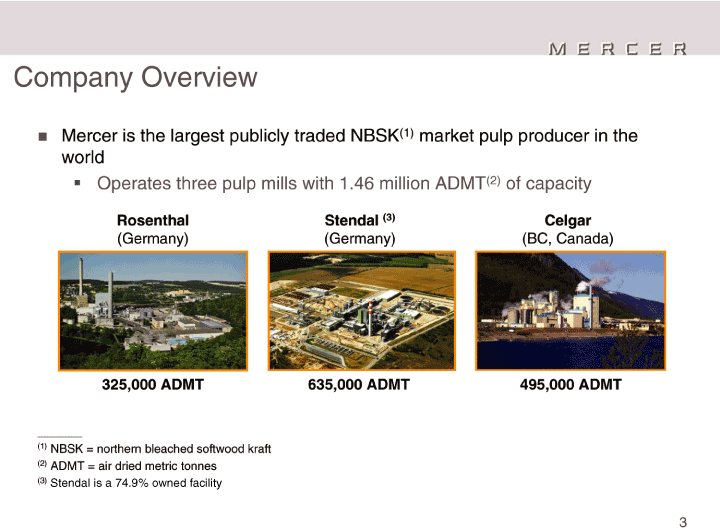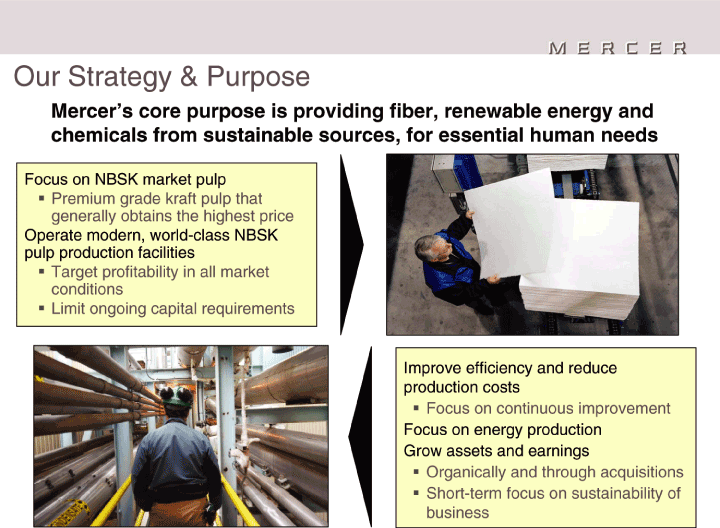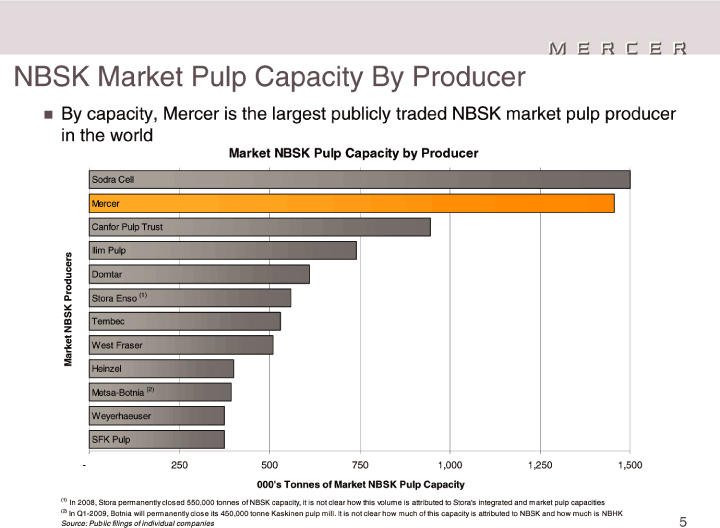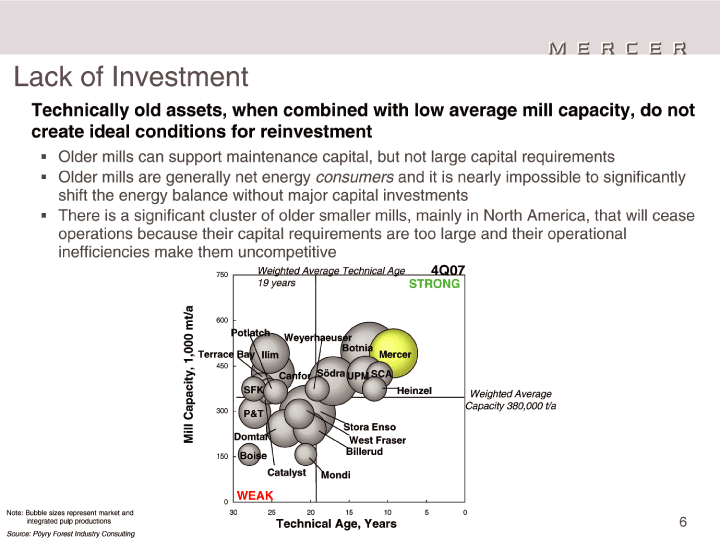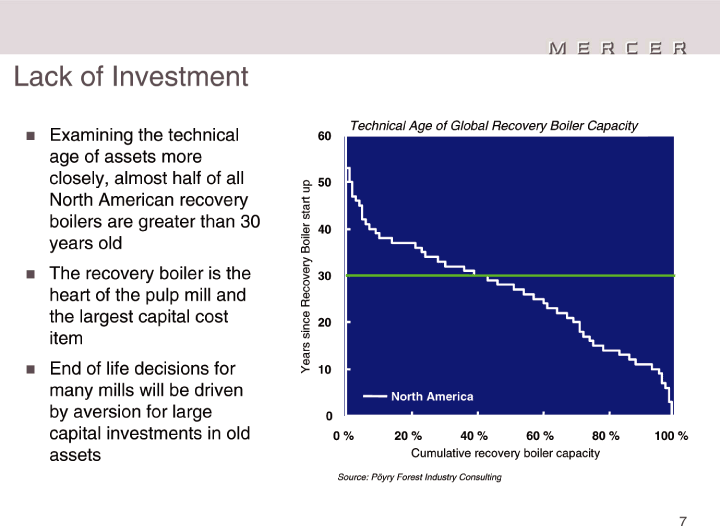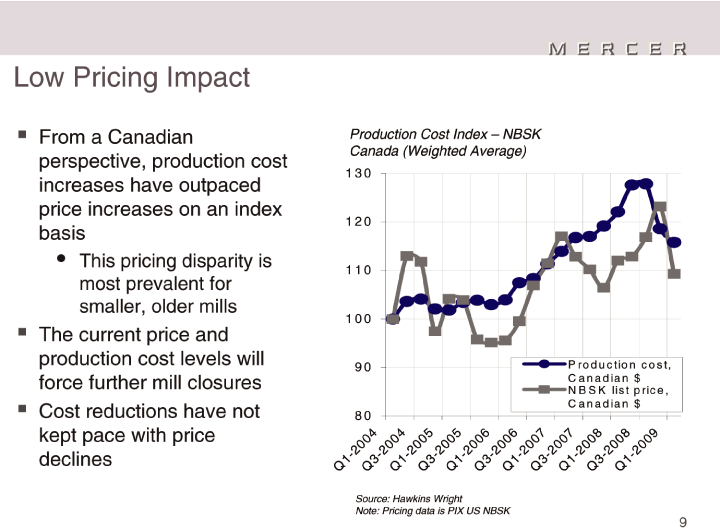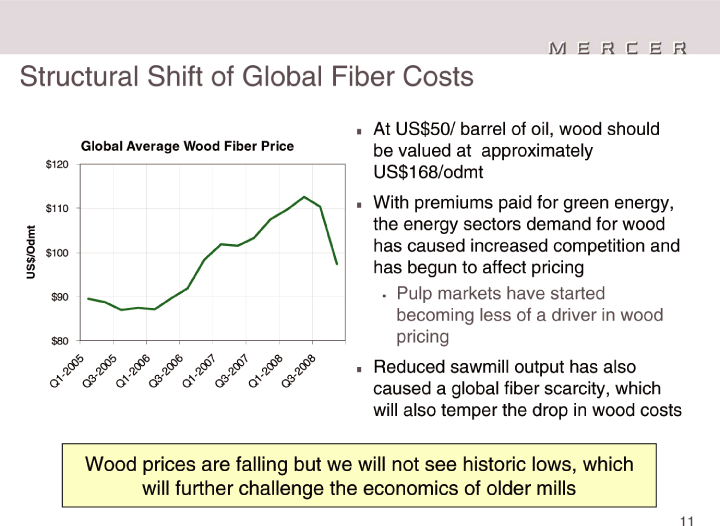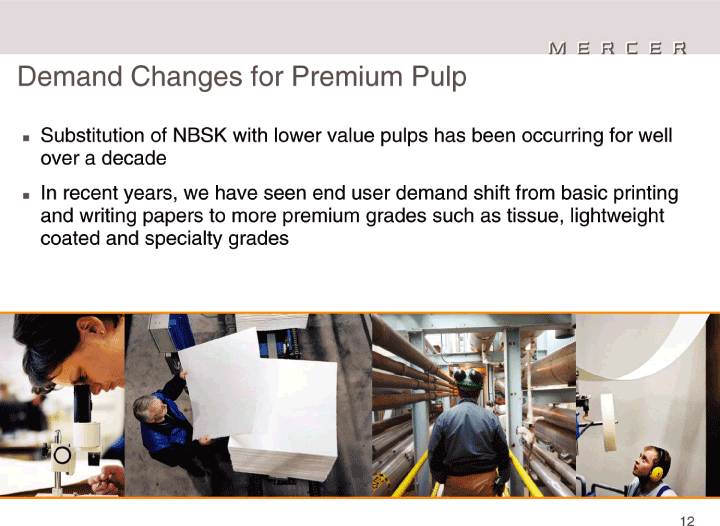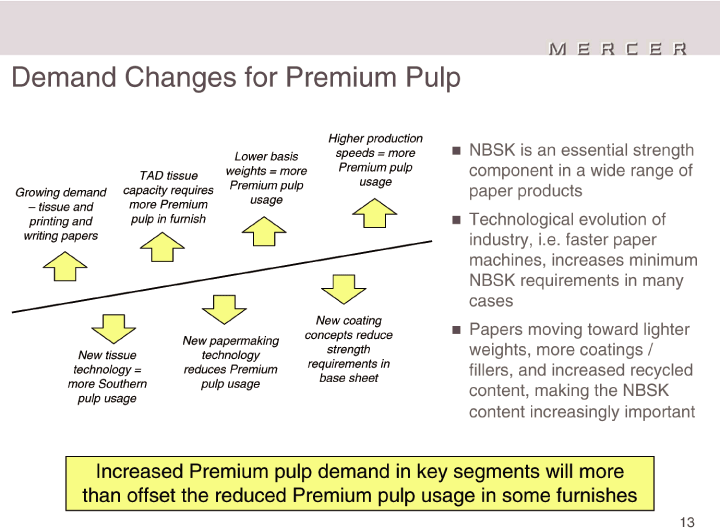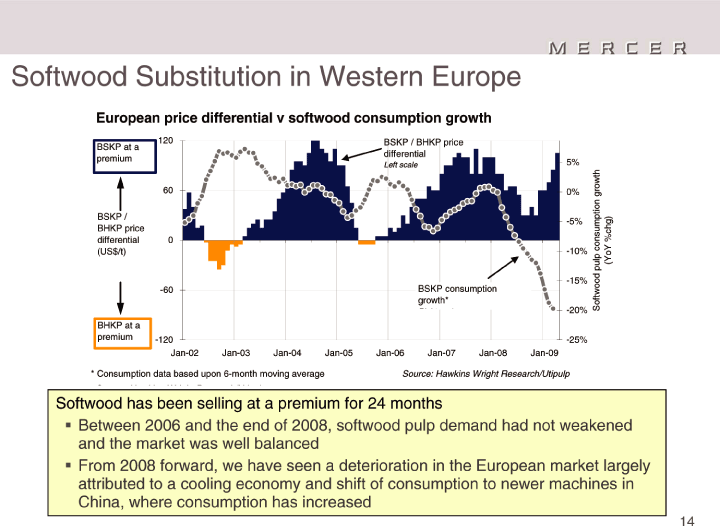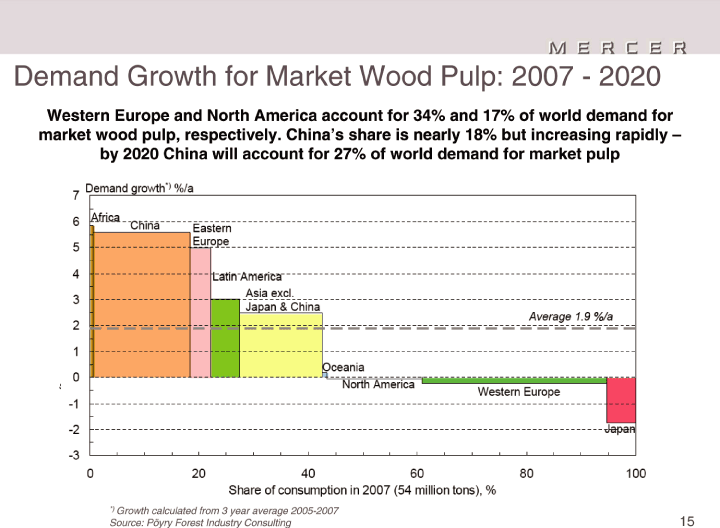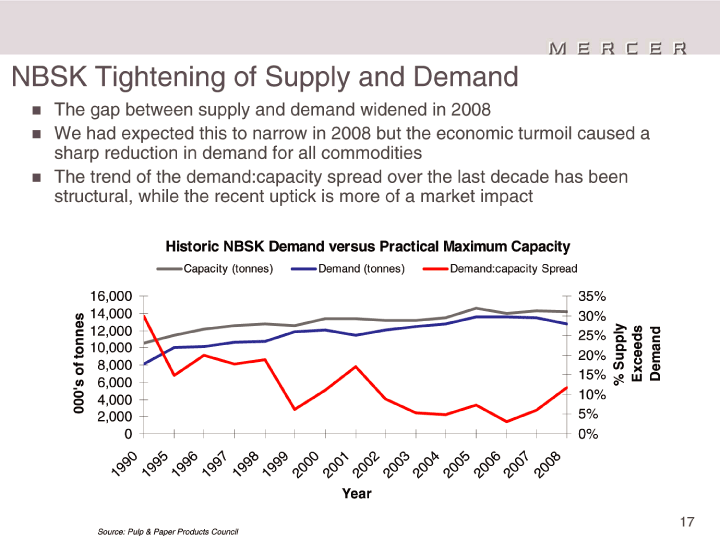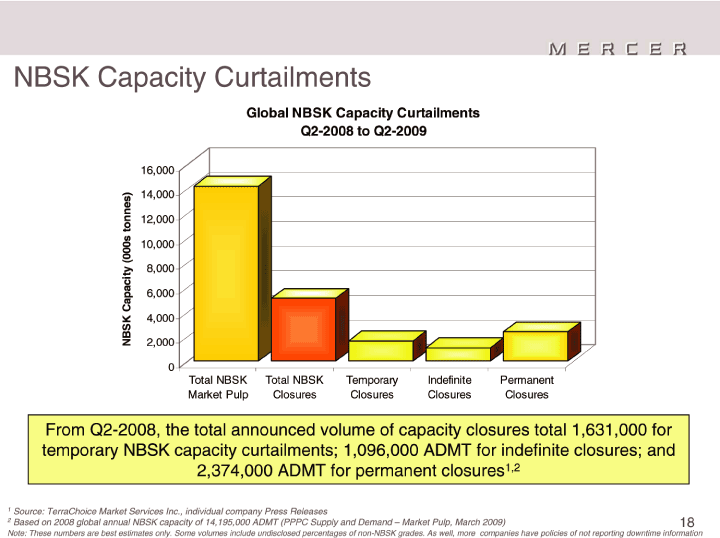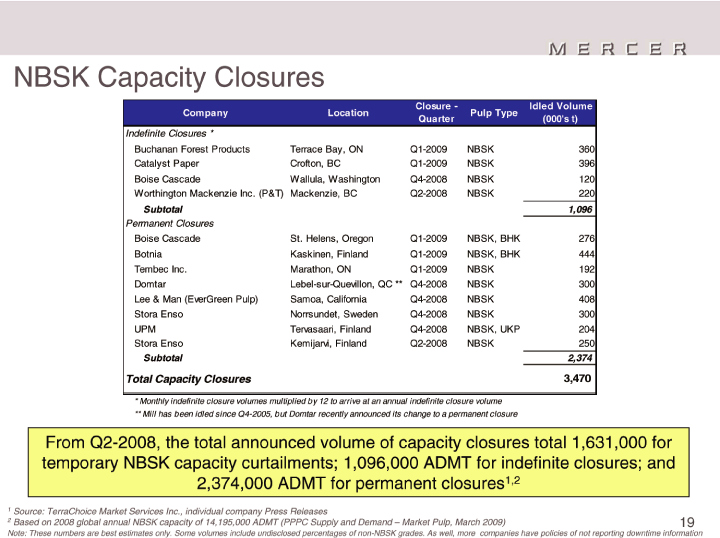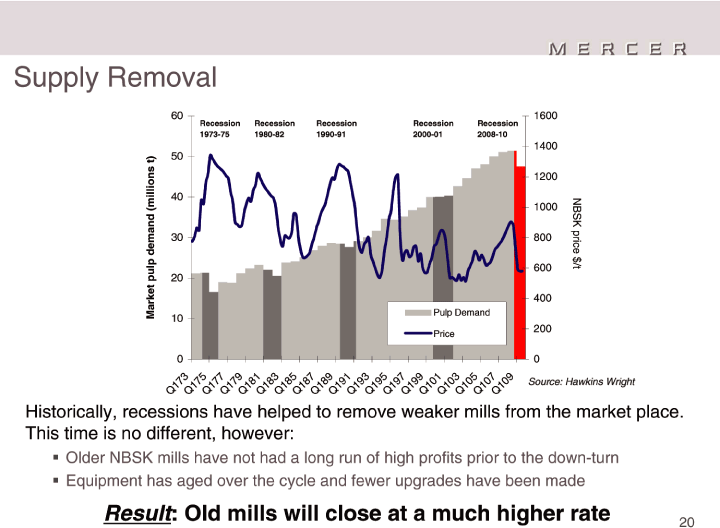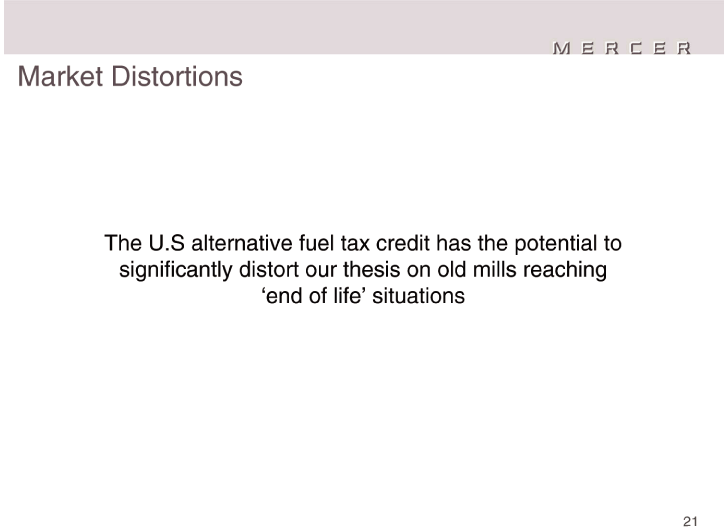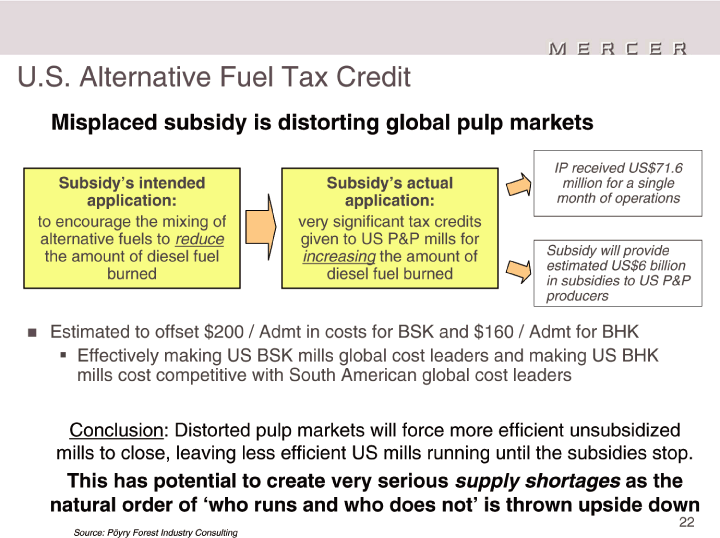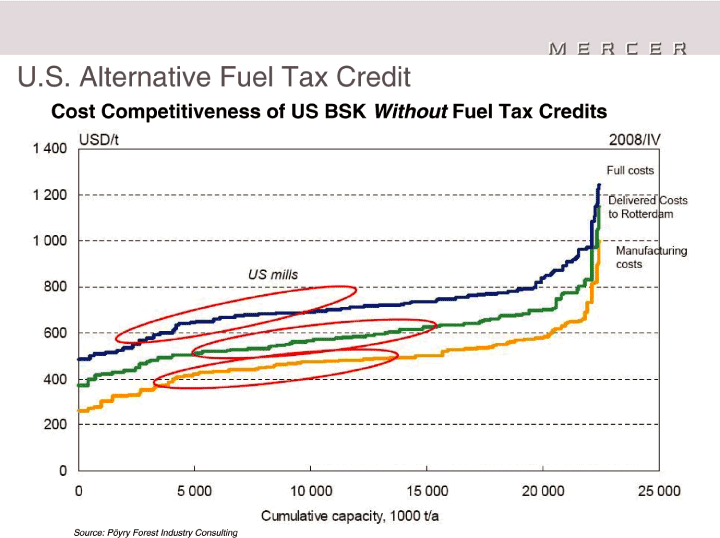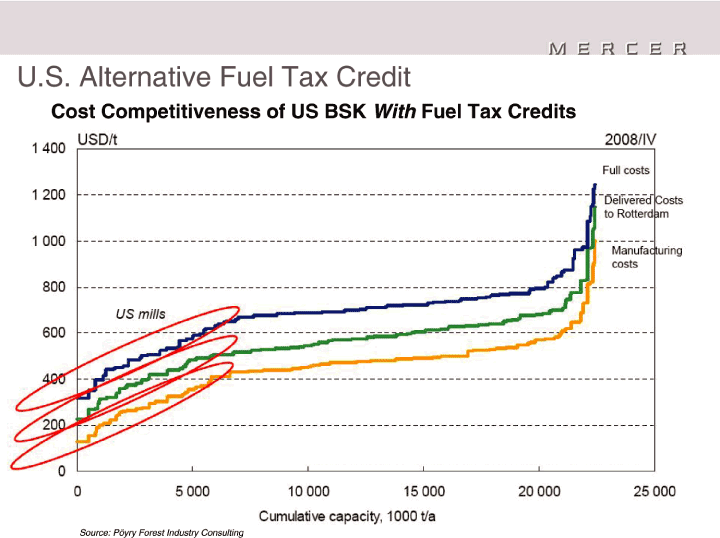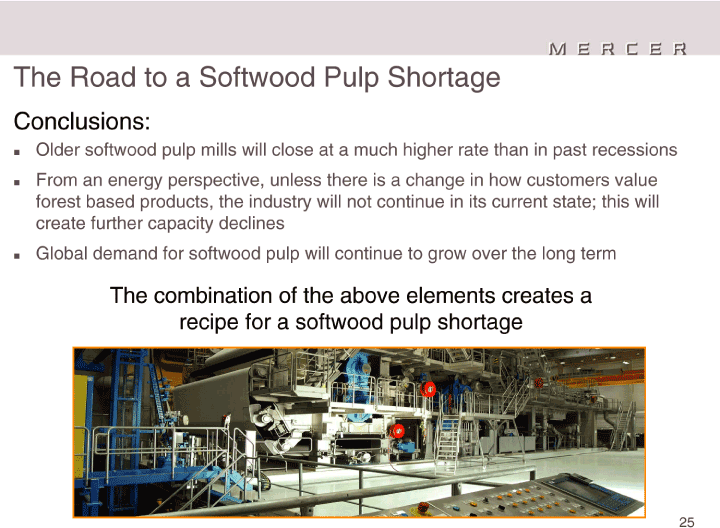| NBSK Capacity Closures Closure — Idled Volume Company Location Pulp Type Quarter (000’s t)Indefinite Closures *Buchanan Forest Products Terrace Bay, ON Q1-2009 NBSK 360 Catalyst Paper Crofton, BC Q1-2009 NBSK 396 Boise Cascade Wallula, Washington Q4-2008 NBSK 120 Worthington Mackenzie Inc. (P&T) Mackenzie, BC Q2-2008 NBSK 220Subtotal 1,096Permanent ClosuresBoise Cascade St. Helens, Oregon Q1-2009 NBSK, BHK 276 Botnia Kaskinen, Finland Q1-2009 NBSK, BHK 444 Tembec Inc. Marathon, ON Q1-2009 NBSK 192 Domtar Lebel-sur-Quevillon, QC ** Q4-2008 NBSK 300 Lee & Man (EverGreen Pulp) Samoa, California Q4-2008 NBSK 408 Stora Enso Norrsundet, Sweden Q4-2008 NBSK 300 UPM Tervasaari, Finland Q4-2008 NBSK, UKP 204 Stora Enso Kemijarvi, Finland Q2-2008 NBSK 250Subtotal 2,374Total Capacity Closures3,470* Monthly indefinite closure volumes multiplied by 12 to arrive at an annual indefinite closure volume ** Mill has been idled since Q4-2005, but Domtar recently announced its change to a permanent closureFrom Q2-2008, the total announced volume of capacity closures total 1,631,000 for temporary NBSK capacity curtailments; 1,096,000 ADMT for indefinite closures; and 2,374,000 ADMT for permanent closures1,21 Source: TerraChoice Market Services Inc., individual company Press Releases 2 Based on 2008 global annual NBSK capacity of 14,195,000 ADMT (PPPC Supply and Demand — Market Pulp, March 2009)19Note: These numbers are best estimates only. Some volumes include undisclosed percentages of non-NBSK grades. As well, more companies have policies of not reporting downtime information |
